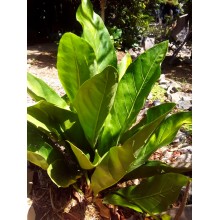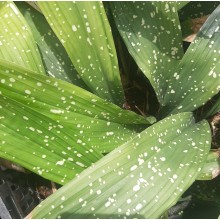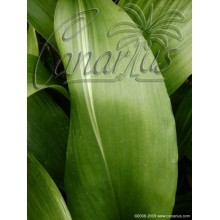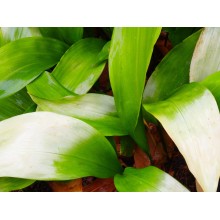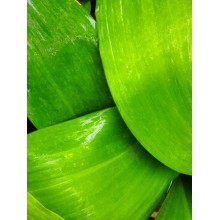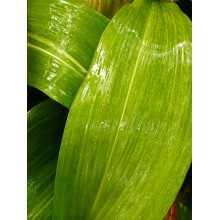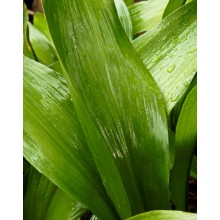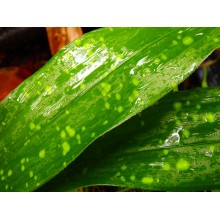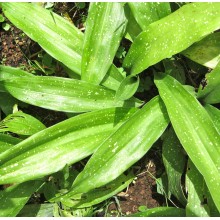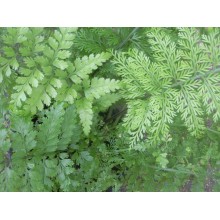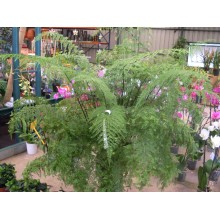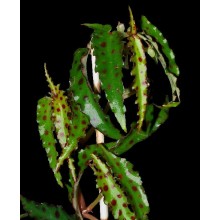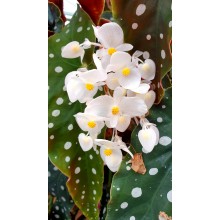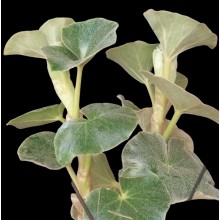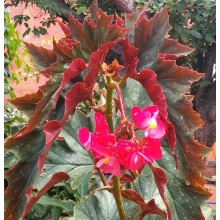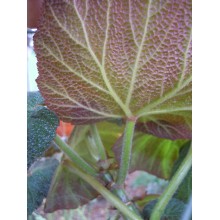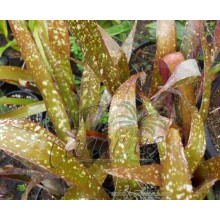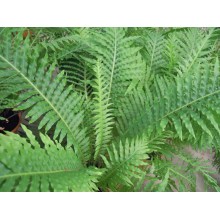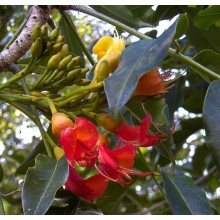Indoor Plants There are 199 products.

This is our selection of plants that can live in your home, as "indoor plants". These hard-to-find species are all very different but they can all be grown in your home. Some can take very low light and some others might need to receive some sun from a window. Palms, bromeliads, cordylines and aspidistras should never dry out. On the other hand, Sansevierias, Hoyas and Rhipsalis need less water and can even take drought.
-
Anthurium schlechtendalii
Anthurium schlechtendalii
Extremely ornamental birdnest anthurium with nice dark purple inflorescences, followed by thick "tails" of glossy red fruits. It does well in pots or as an epiphytes, attaining 50-120 cm in height. It is mid-sized and goes well as an indoor plant.
58,90 € -
Anthurium wendlingeri
Anthurium wendlingeri
Truly exotic aroid with narrow and long, penduluous , dark leaves and an unusal corkscrew inflorescence.
68,00 € -
Aspidistra daibuensis 'Totally Dotty'
Aspidistra daibuensis 'Totally Dotty'
This is one of the most beautiful aspidistras we grow. Leaves have a beautiful texture, with tiny elegant ribs, and a lot of well defined spots... sorry "Dots"... these are bright white but their outer edge is yellow and then dark green, so they stand out a lot.
28,30 € -
Aspidistra elatior 'Variegata'
Aspidistra elatior 'Variegata'
Wide exotic striped leaves rise from rhizomes. Aspidistra is a perfect indoor plant and a does well outdoors in the tropical-looking garden.
11,30 € -
Aspidistra elatior 'Asa Ahi'
Aspidistra elatior 'Asa Ahi'
Hard-to-find Japanese selection of "variegated" Aspidistra. It is not striped: each leaf develops a cream white "shade" in the upper part of the blade. Aspidistras make excellent pot plants for shade. They can live indoors or outdoors as they can take real frost.
17,44 € 21,80 €Reduced price! -
Aspidistra elatior 'Bubba'
Aspidistra elatior 'Bubba'
This selection of Aspidistra elatior from Florida is a particularly nice, wide-leaf, solid dark green selection. It grows to at least 1 m tall with broad foliage that may exceed 15 cm in width. A bold garden specimen.
19,40 € -
Aspidistra elatior 'Morning Frost'
Aspidistra elatior 'Morning Frost'
NEW! Variegated aspidistra with "frosted" mottled leaves and occasional stripes.
19,40 € -
Aspidistra elatior var. attenuata
Aspidistra elatior var. attenuata
This is considered the most floriferous aspidistra, because its large flowers carpet the ground conspicuously during the winter months.
19,40 € -
Aspidistra sichuanensis 'crispa'
Aspidistra sichuanensis 'crispa'
This species has very dark green leaves with remarkable yellow spots. They are glossy, up to 50-60 cm long, with elegant pendant tips. It is frost-hardy to about - 10 C.
19,40 € -
Aspidistra sichuanensis 'Ginga'
Aspidistra sichuanensis 'Ginga'
NEW!Aspidistra sichuanensis 'Ginga' is most always sold in the trade as Aspidistra 'Milky Way'. - See more at: http://www.plantdelights.com/Aspidistra-sichuanensis-Ginga-for-sale/Buy-Speckled-Cast-Iron-Plant/#sthash.jXWBO7WT.dpuf
19,40 € -
Asplenium x Lucrosum
Asplenium x Lucrosum
Attractive fern producing small plantlets on its leaves. It makes an impressive house plant, to 80 cm tall or more. is native to Australia and New Zealand, where Its fronds are eaten as a vegetable.
10,20 € -
Asplenium x Lucrosum - Large
Asplenium x Lucrosum - Large
Premium sized specimen of this elegant fern producing "bulblis" on its feathery fronds. The size is more or less like in picture.
32,00 € -
Begonia amphioxus
Begonia amphioxus
This small and showybegonia is native to Sabah in Borneo. Leaves are peltate and pointed at both ends. They are bright green, dotted with red-burgundy spots. It was described in 1990 and it rather easy to grow.
18,70 € -
Begonia maculata 'Wightii'
Begonia maculata 'Wightii'
What a beauty! This plant came out of the brazilian forests, and it soon became one of the most sought after indoor plants. According to begonia experts, this a "Spotted-leaf angel-wing cane-type begonia" and indeed the wings are dotted with silver circles.
14,70 € -
Begonia venosa
Begonia venosa
Begonia venosa is a shrubby species. Between 60 and 90 cm tall, it grows forming large solid and branched stems, covered with large translucent stipules with red veins. Its leaves have whitish-silver dots and it produces white flowers.
24,80 € -
Begonia x 'Sophie Cecile'
Begonia x 'Sophie Cecile'
This large-sized hybrid is one of the most spectacular of the group of hybrids known as "cane begonias" or "angel leaves". 'Sophie Cecile' has a tall, robust, upright habit, growing as a tight clump of bamboo with very elegant olive-green leaves with silvery spots and burgundy underleaves.
28,30 € -
Begonia x Art Hodes
Begonia x Art Hodes
Beautiful rounded "crispy" leaves, with incredibly rugged blades. The leaves of this South American hybrid Begonia are dark green above and pink-red below.
11,20 € -
Billbergia x Hoelscheriana
Billbergia x Hoelscheriana
A very old, cold-hardy hybrid with densely spotted leaves, created by crossing Billbergia nutans x B. saundersii. It is tolerant of both sun and shade.
20,40 € -
Blechnum gibbum
Blechnum gibbum
A miniature tree fern native to the islands of the South Pacific. It can be grown indoors as a house plant.
10,80 € -
Castanospermum australe - Australian Chestnut
Castanospermum australe - Australian Chestnut
Ornamental and useful tree from Australia, New Caledonia and Vanuatu. It typically bears yellow and red flowers at the same time. Chestnuts are edible and good too, but they have to be leached and cooked before eating.
38,00 €
At the moment there are few products in this category Indoor Plants
















